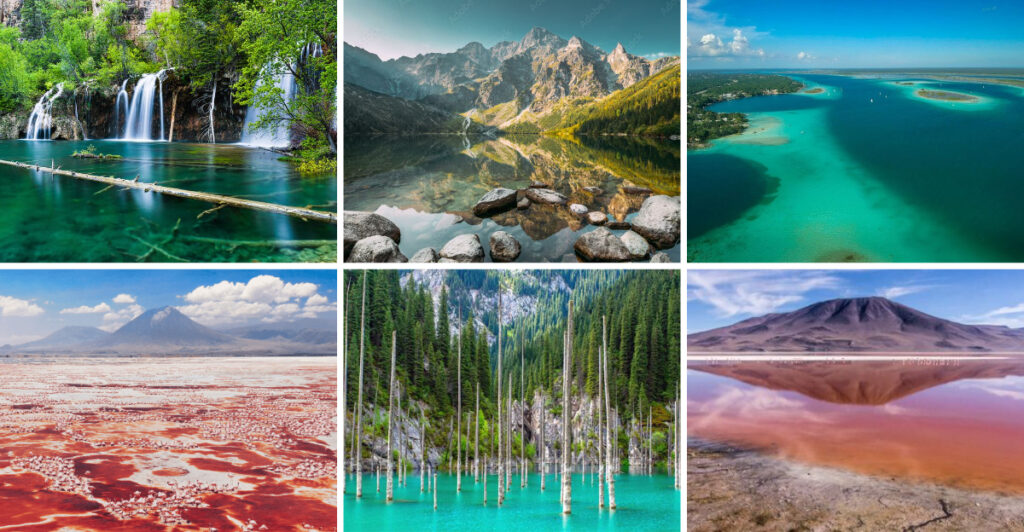Ever felt like you’re missing out on nature’s best-kept secrets? While Lake Como and Lake Tahoe grab all the headlines, some truly magical lakes remain hidden from tourist crowds. These lesser-known bodies of water offer crystal-clear waters, breathtaking surroundings, and peaceful experiences without the Instagram crowds. Get ready to discover 31 hidden lake treasures that might just become your next favorite getaway spot.
1. Morskie Oko, Poland
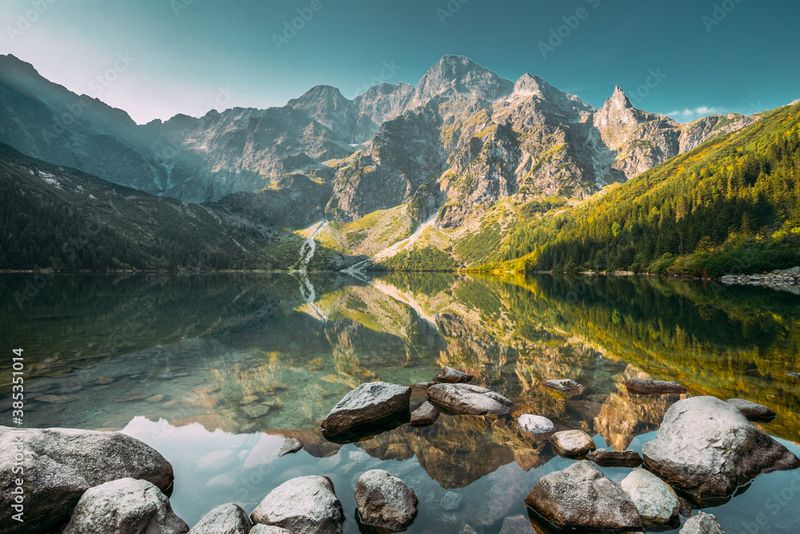
Nestled in the Tatra Mountains, this ‘Eye of the Sea’ glimmers like an emerald jewel. Local legend claims it’s connected to the ocean through underground passages.
Surrounded by towering peaks that reflect perfectly in its still waters, Morskie Oko remains relatively unknown to international travelers. The 2-hour hike to reach it keeps the crowds thin and rewards visitors with one of Europe’s most spectacular alpine lake views.
2. Lake Kaindy, Kazakhstan
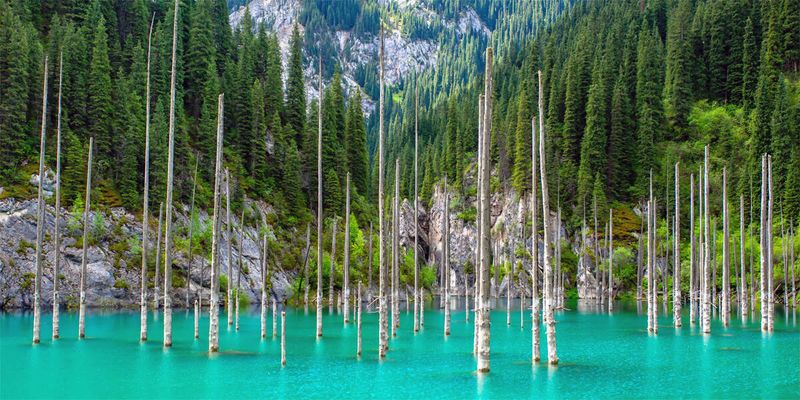
Earthquake-born in 1911, this surreal lake features an underwater forest of spruce trees still standing tall beneath the surface. Their naked trunks rise above the water like skeletal sentinels.
The striking turquoise water comes from limestone deposits, creating an otherworldly blue glow. During winter, the lake freezes so clearly that you can see the preserved trees beneath the ice, making it look like something from a fantasy movie.
3. Melissani Cave Lake, Greece
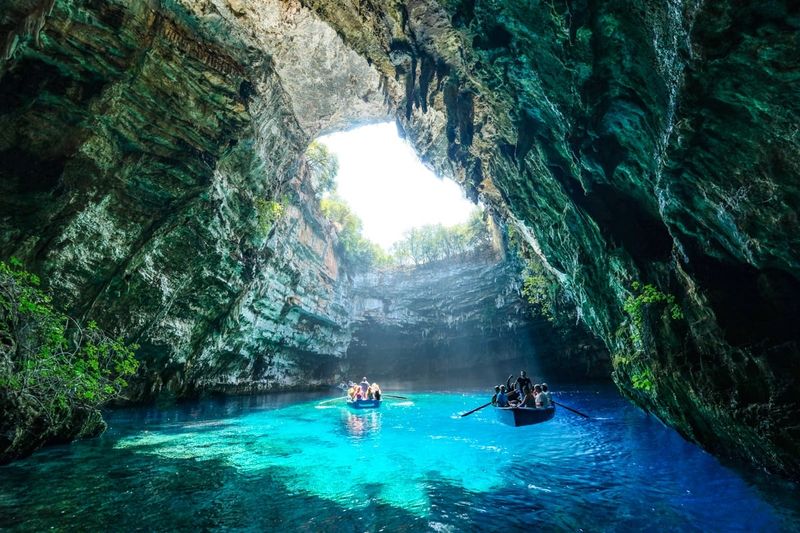
Hidden inside a collapsed cave on Kefalonia Island, Melissani’s waters glow an electric blue when sunlight streams through the open ceiling. Ancient Greeks once worshipped the nymph Melissani here.
Row boats glide silently across waters so clear they seem invisible in spots. The lake’s depth changes dramatically, creating bands of color from turquoise to deep blue. When sunlight hits directly at noon, the entire cave illuminates with an ethereal blue light.
4. Laguna Colorada, Bolivia
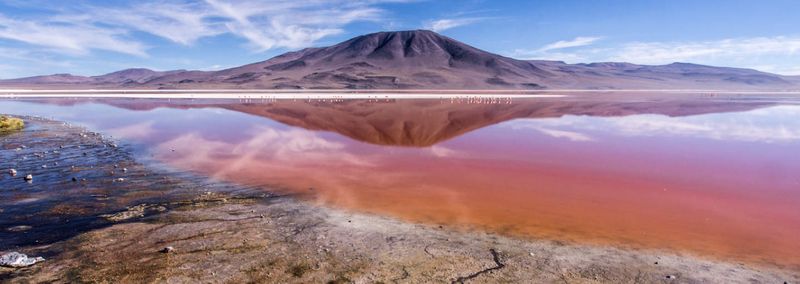
A blood-red salt lake sitting 14,000 feet above sea level in the Bolivian Andes. White borax islands dot the crimson surface, creating a striking contrast against the rusty waters.
The lake’s unusual color comes from red sediments and pigmentation of certain algae. Thousands of flamingos wade through these mineral-rich waters, feeding on the very algae that give the lake its distinctive hue. Their pink bodies against the red water create a photographer’s dream landscape.
5. Hanging Lake, Colorado
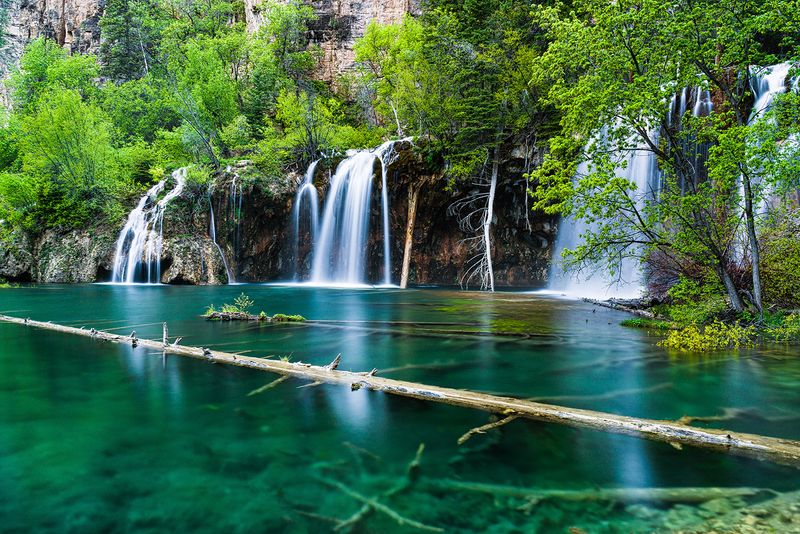
Suspended on the edge of Glenwood Canyon’s cliffs, this travertine gem seems to defy gravity. Crystal clear waters reveal every detail of the lake bottom, while waterfalls cascade directly into the pool.
The fragile ecosystem requires visitors to obtain permits and follow strict rules. Fallen logs crisscross beneath the surface, preserved by mineral-rich waters. Just above the lake, Spouting Rock waterfall bursts directly from a cliff face, adding another magical element to this suspended paradise.
6. Lake Hillier, Australia
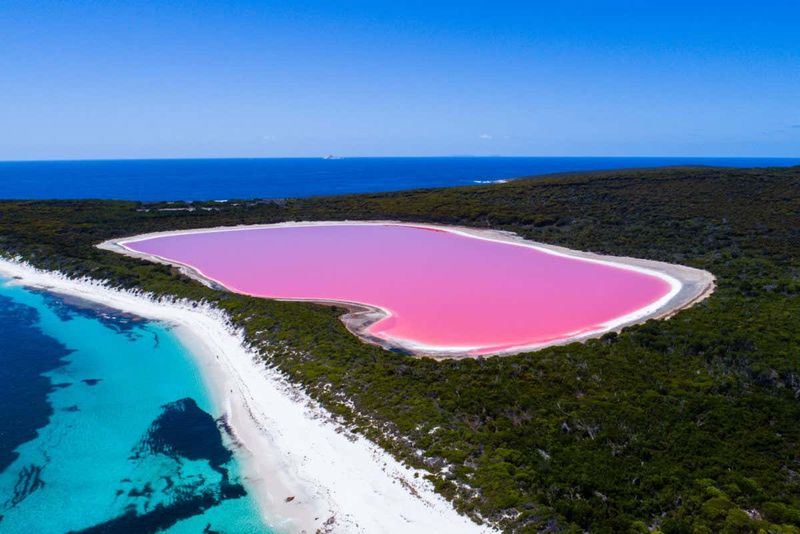
Bubblegum pink waters lap against white salt shores on this small island lake off Western Australia’s coast. Unlike other pink lakes that change color with seasons, Hillier maintains its rosy hue year-round.
Scientists believe the color comes from a combination of algae, bacteria, and high salt concentration. Viewed from above, the pink lake creates a striking contrast against the deep blue Southern Ocean just a few meters away. Despite its candy-like appearance, the water is perfectly safe to swim in.
7. Bacalar Lagoon, Mexico
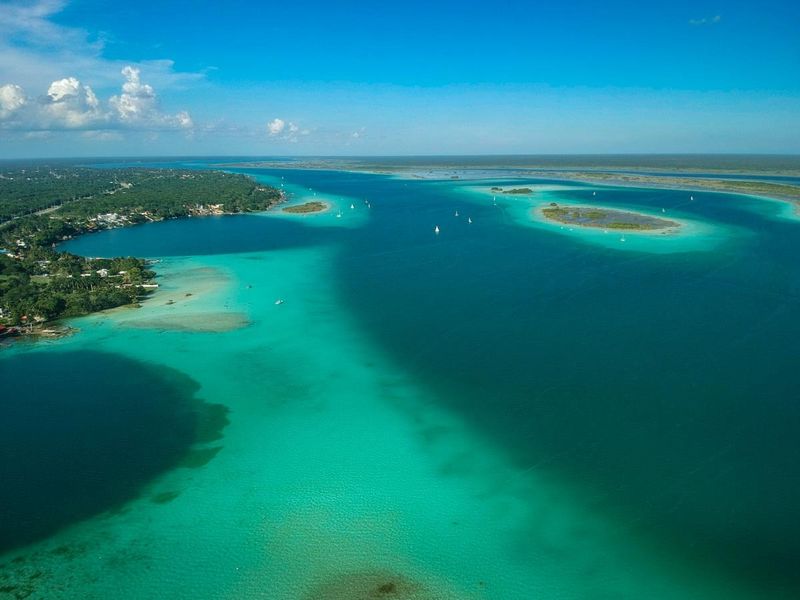
Known as the ‘Lake of Seven Colors,’ this freshwater lagoon displays an incredible spectrum of blues. Ancient Maya considered it sacred, and today it remains one of Mexico’s best-kept secrets.
Stromatolites—living rocks formed by the oldest organisms on Earth—line parts of the shoreline. These rare formations date back 3.5 billion years and are found in only a few places worldwide. The lake’s white limestone bottom reflects sunlight, creating the mesmerizing color gradients that give Bacalar its nickname.
8. Crater Lake, Oregon
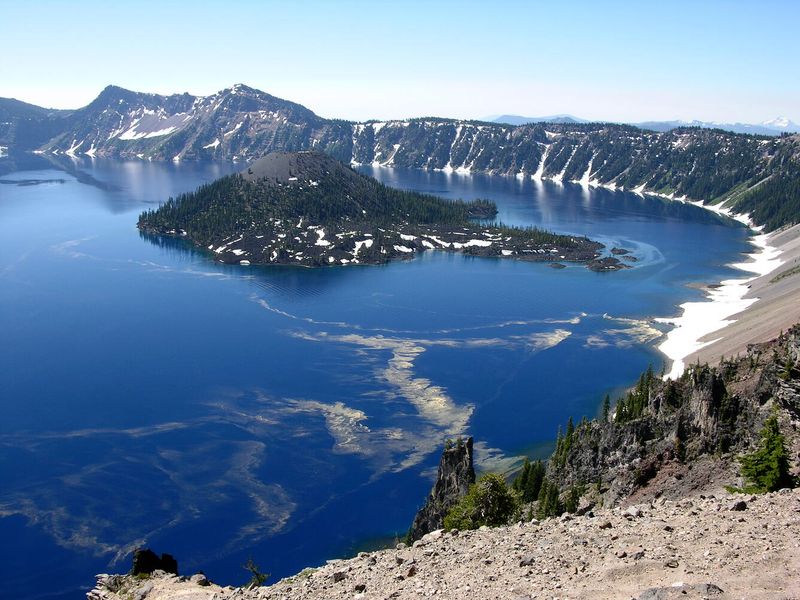
America’s deepest lake formed in the caldera of an ancient volcano that collapsed 7,700 years ago. The water’s intense blue color comes from its exceptional purity and depth.
No rivers flow in or out of this pristine basin, which contains some of the clearest water on Earth. Wizard Island, a cinder cone that rose from the lake after the collapse, adds drama to the landscape. Scientists have measured visibility to 143 feet below the surface—a clarity unmatched by almost any other lake.
9. Lake Natron, Tanzania
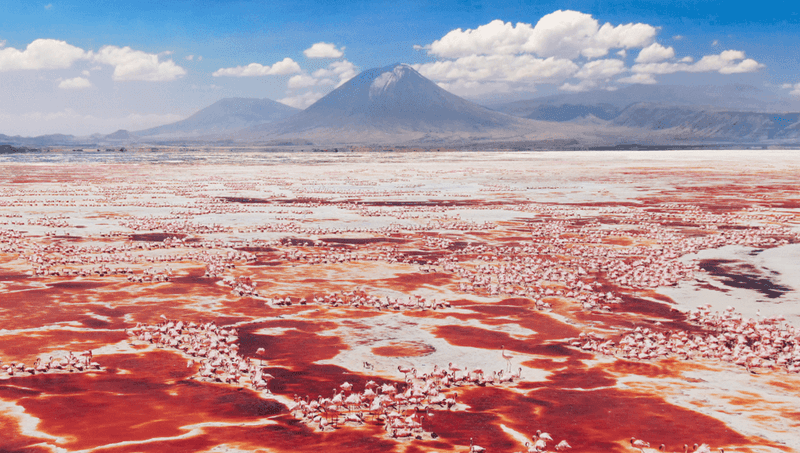
Blood-red waters so caustic they can burn human skin make this shallow soda lake appear apocalyptic. Despite its harsh chemistry, millions of flamingos use it as their primary breeding ground.
The lake’s bizarre coloration comes from haloarchaea microorganisms that thrive in its extreme salt content. Animals that die in these waters become calcified, appearing to turn to stone. Seen from above, Natron looks like a painting with swirls of crimson, orange, and rust spreading across the African landscape.
10. Spotted Lake, Canada
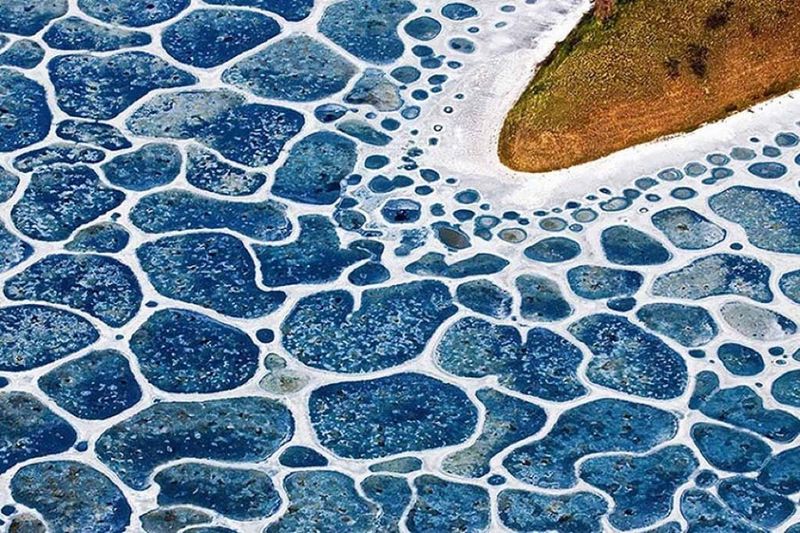
During summer, this mineral-rich lake in British Columbia evaporates, revealing hundreds of small, multicolored pools. Each ‘spot’ contains different mineral concentrations, creating a palette of blues, greens, and yellows.
Indigenous Okanagan people have used the lake’s therapeutic mud for centuries to treat ailments. The minerals—including calcium, sodium, and magnesium sulfates—create natural walkways between pools as water levels drop. In winter, the lake refills, hiding its spotted nature until the next summer reveals its polka-dot pattern again.
11. Plitvice Lakes, Croatia
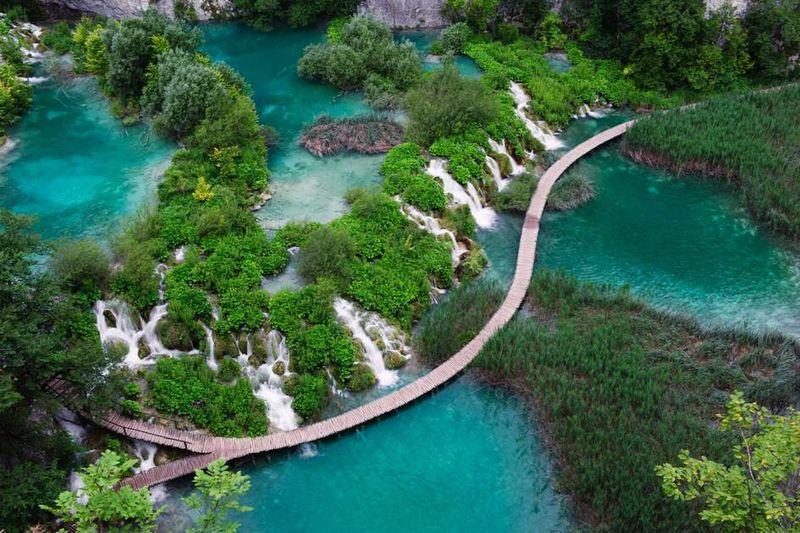
Sixteen terraced lakes connected by waterfalls create nature’s perfect staircase in this hidden Croatian wonder. Wooden walkways wind through and over the turquoise waters, bringing visitors close enough to feel the spray.
Minerals in the water create natural dams called travertine barriers, which continue growing about 1cm per year. The lakes change color throughout the day and seasons, shifting between azure, green, gray, and blue depending on mineral content and sunlight. Wildlife thrives here, with wolves, bears, and rare bird species inhabiting the surrounding forests.
12. Lake Retba, Senegal
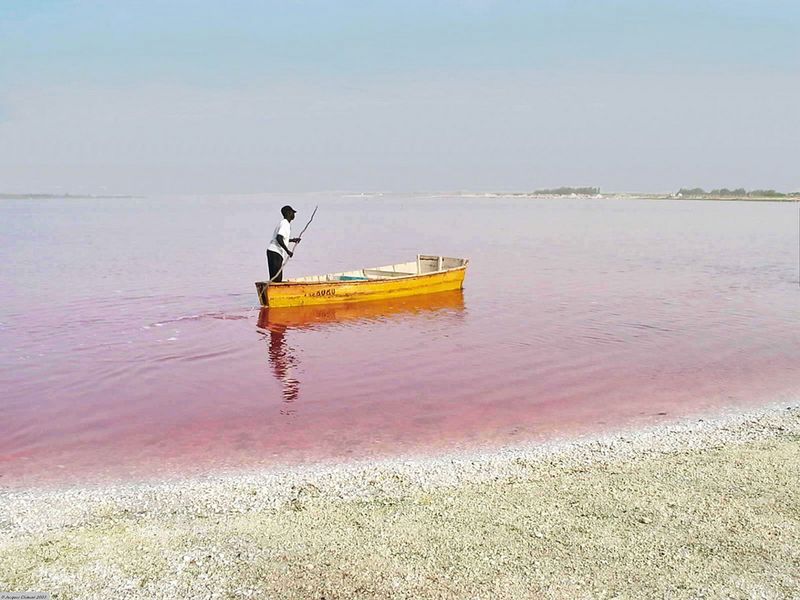
Salt harvesters wade chest-deep in pink waters that rival the Dead Sea for salinity. Located just an hour from Dakar, this rosy lake gets its color from Dunaliella salina algae that produce red pigment to absorb sunlight.
Workers coat their skin with shea butter to protect against the harsh salt before collecting the mineral from the lake bottom. The color is most intense during dry season. From certain angles, only a narrow sand dune separates the pink lake from the blue Atlantic Ocean—creating a stunning visual contrast.
13. Kerid Crater Lake, Iceland
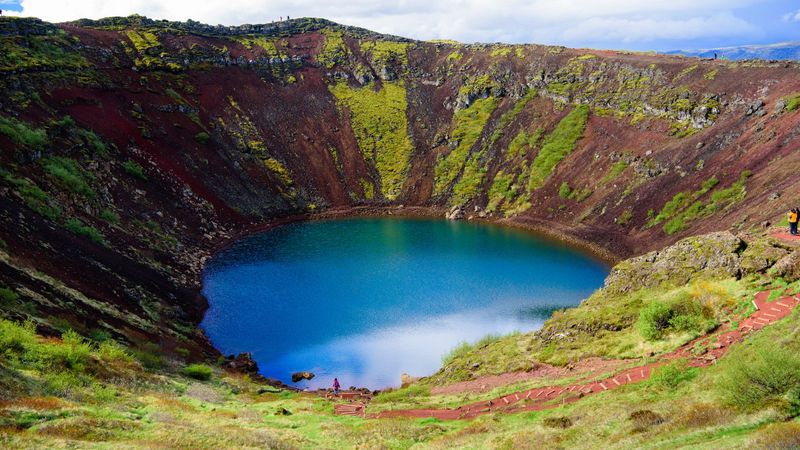
A vivid aquamarine pool fills this 3,000-year-old volcanic crater. Unlike most of Iceland’s volcanic formations, Kerid wasn’t formed by an explosion but collapsed in on itself when the magma reservoir emptied.
The crater walls display unusual red volcanic rock instead of the black lava typical of Iceland. Visitors can walk the rim in about 15 minutes, taking in views of the perfect oval lake below. In winter, the frozen surface creates a stark white contrast against the red and green surroundings.
14. Hutt Lagoon, Australia
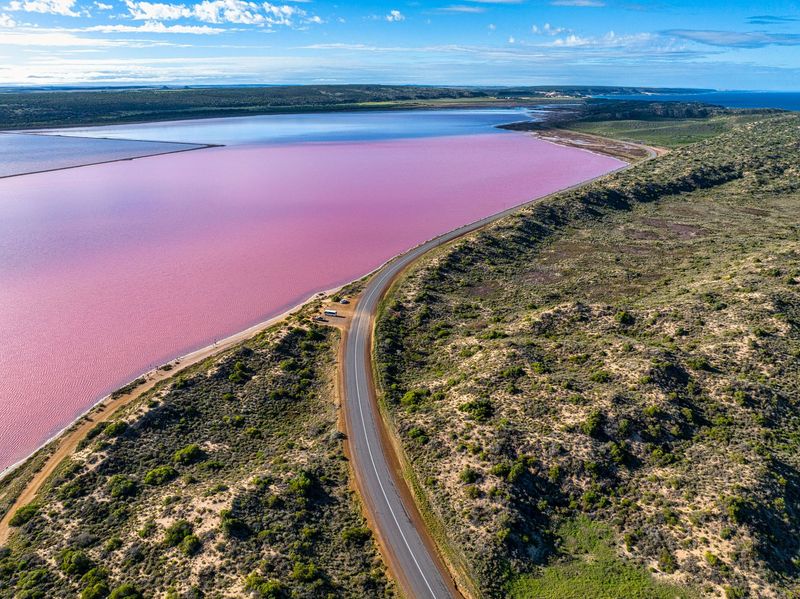
Another of Australia’s pink lakes, Hutt Lagoon changes color throughout the day from lilac to strawberry milkshake. The 14-kilometer-long lake contains the world’s largest microalgae production plant.
Beta-carotene harvested from the lake is used in food coloring and cosmetics worldwide. The best viewing times are mid-morning or sunset when the colors intensify. Aerial views reveal the lake’s true scale and the striking contrast it creates against the surrounding farmland and nearby ocean.
15. Lake Baikal, Russia
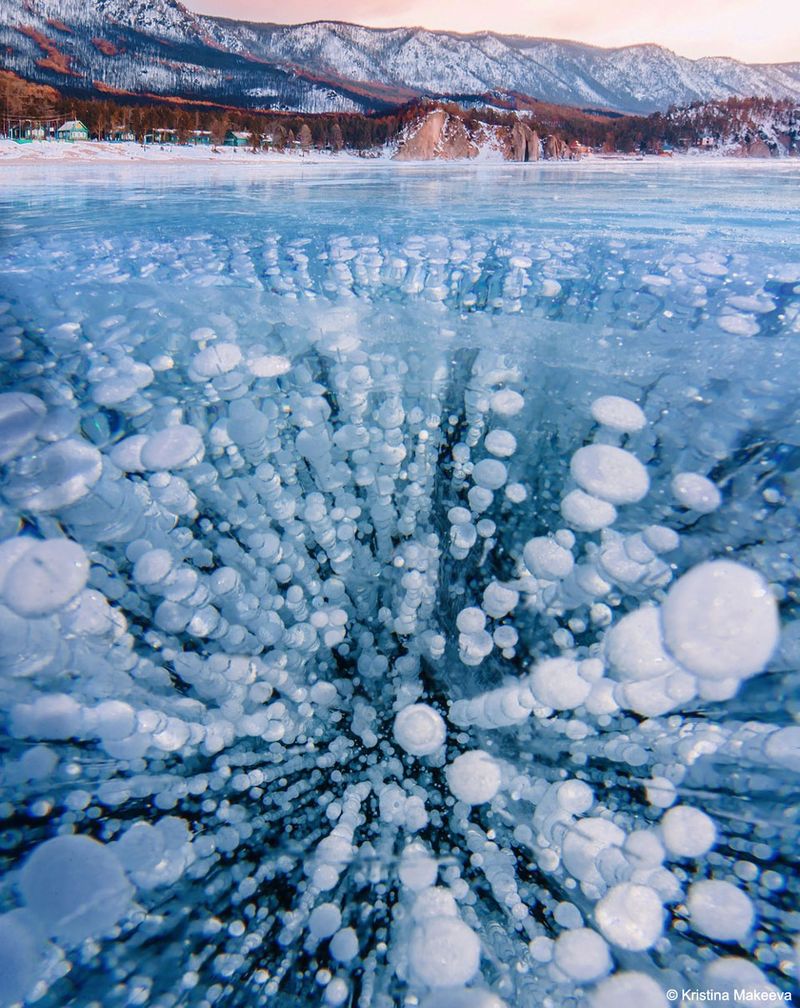
Earth’s oldest and deepest lake holds 20% of the world’s unfrozen freshwater. During winter, methane bubbles rising from the bottom freeze in place, creating spectacular transparent ice formations that look like frozen jellyfish.
The lake’s extreme clarity allows visibility down to 40 meters in some areas. Home to thousands of species found nowhere else, including the only freshwater seal in the world. When frozen, the ice is so thick and clear that drivers can safely cross the lake, creating natural highways between communities.
16. Band-e Amir Lakes, Afghanistan
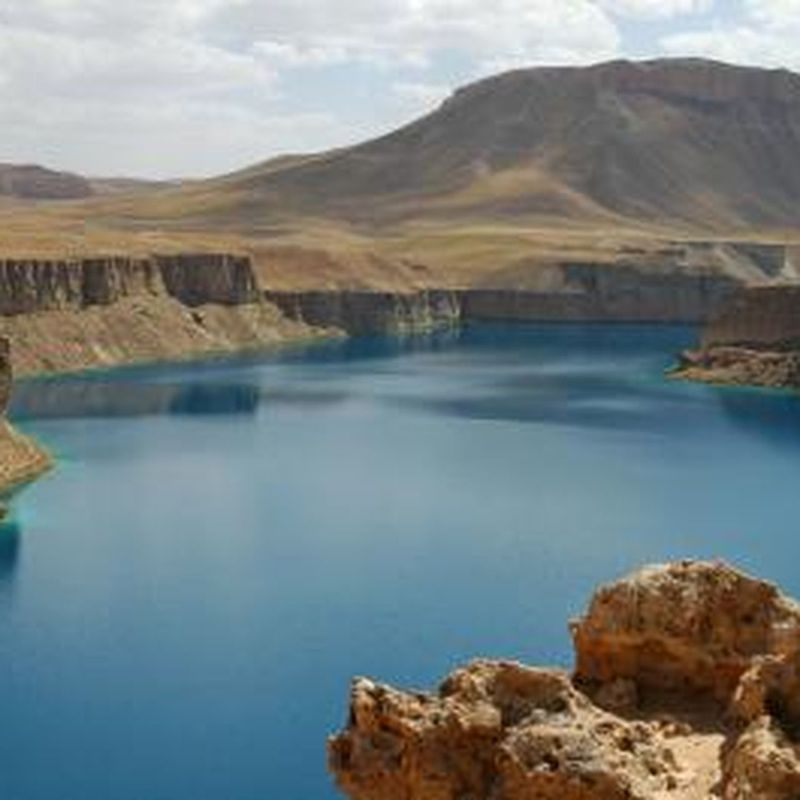
Six deep blue lakes shine like sapphires in the Hindu Kush mountains, forming Afghanistan’s first national park. Natural dams created by mineral deposits separate each lake, with travertine walls rising dramatically from the water.
Local legend claims the lakes were created by Ali, the son-in-law of Prophet Muhammad. Despite decades of conflict, these lakes remain pristine, their color coming from the high mineral content. The contrast between the azure waters and surrounding arid landscape creates a surreal oasis effect in this remote region.
17. Emerald Lake, Yukon
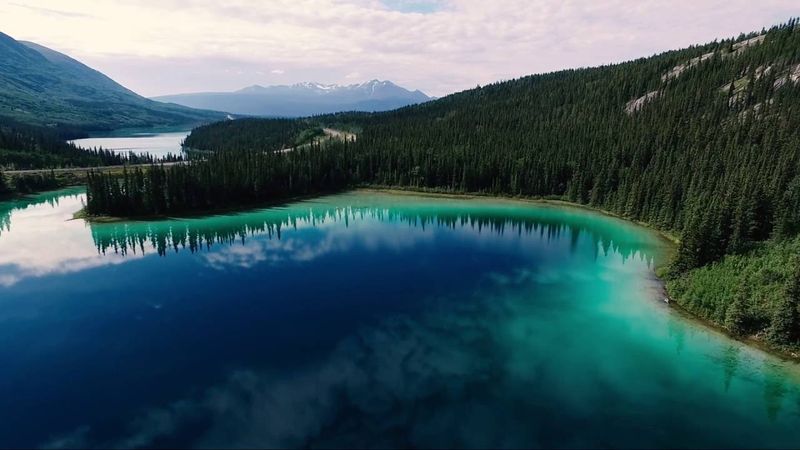
The name tells the story—this Canadian gem glows a brilliant green due to light reflecting off white calcium carbonate deposits on the lake bottom. Located in the remote Yukon territory, it remains uncrowded even in peak summer months.
A 5.3-kilometer hiking trail circles the lake, offering different perspectives of its jewel-toned waters. During winter, the lake freezes solid enough for ice skating. The surrounding mountains create a perfect amphitheater that protects the lake from winds, often resulting in mirror-perfect reflections on calm days.
18. Lagoa do Fogo, Azores
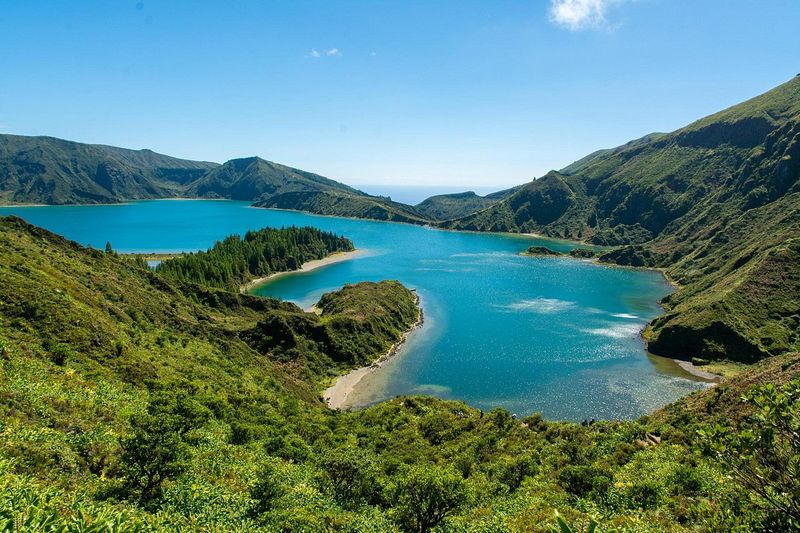
Hidden in the crater of a dormant volcano on São Miguel Island, this ‘Lake of Fire’ shimmers an impossible blue against green crater walls. The lake formed after a volcanic eruption in 1563.
Access requires a moderate hike, keeping visitor numbers low despite its breathtaking beauty. The surrounding nature reserve protects endemic plant species found nowhere else. On clear days, the lake reflects the sky so perfectly that the horizon line disappears, creating a disorienting but magical visual effect.
19. Attabad Lake, Pakistan
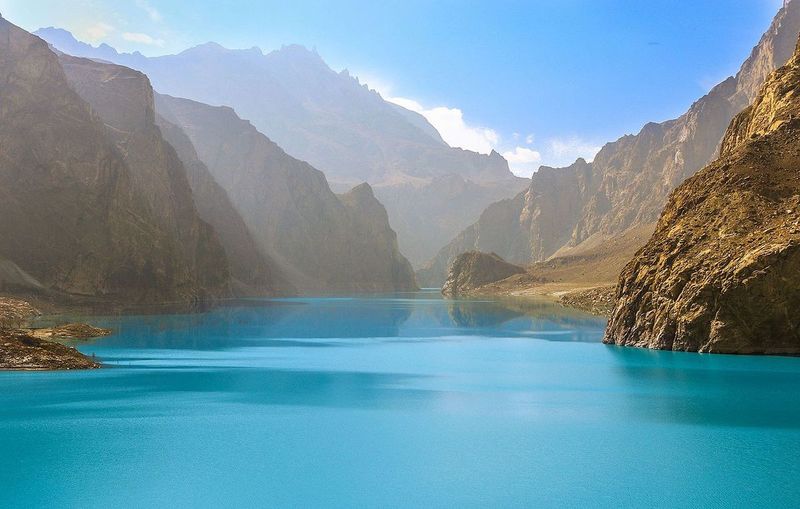
Tragedy created beauty when a massive landslide dammed the Hunza River in 2010, forming this turquoise lake in northern Pakistan. The disaster displaced thousands but created one of the most stunning lakes in the Karakoram mountain range.
The brilliant blue color comes from glacial silt suspended in the water. Local entrepreneurs now offer boat rides across waters that cover what was once their village. The stark contrast between the turquoise water and the surrounding snow-capped peaks creates a landscape that seems almost digitally enhanced.
20. Jellyfish Lake, Palau
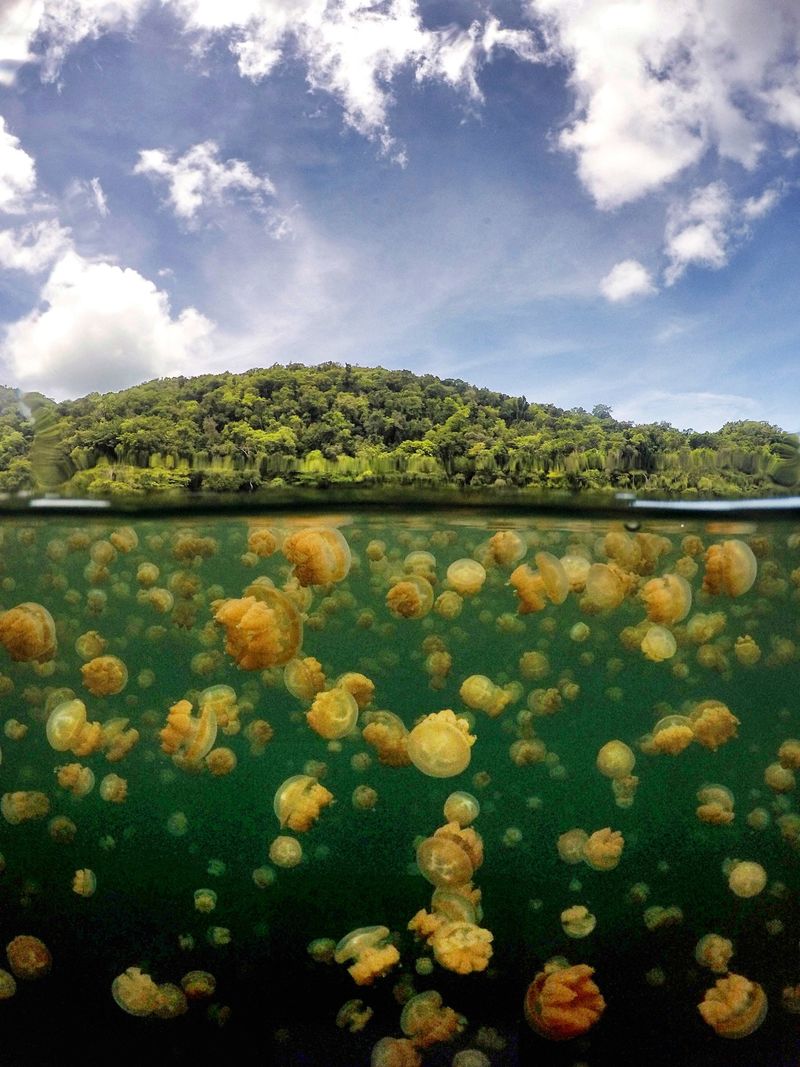
Millions of golden jellyfish migrate across this marine lake daily, following the sun. Isolated from predators for thousands of years, they’ve evolved to lose their sting, allowing swimmers to float safely among the pulsing golden cloud.
The lake connects to the ocean through fissures and tunnels in the limestone, but remains separate enough that the jellyfish have evolved into a distinct species. Each jellyfish contains algae that photosynthesize, providing nutrients to their host. The entire lake ecosystem operates like a natural aquarium unlike anywhere else on Earth.
21. Lake Sørvágsvatn, Faroe Islands
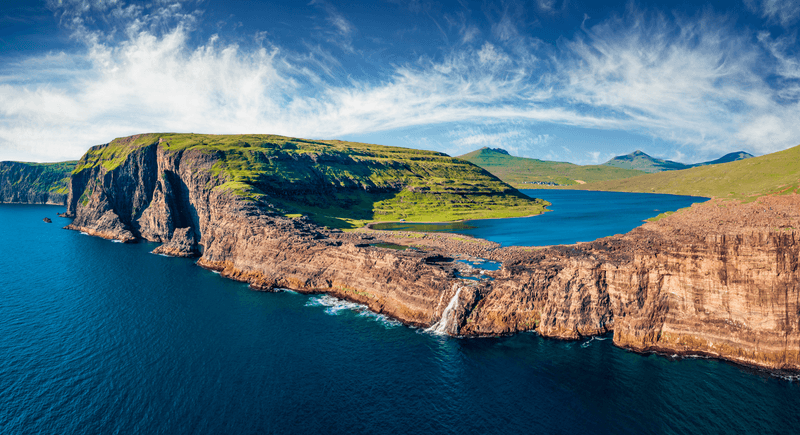
An optical illusion makes this lake appear to hover hundreds of feet above the ocean. From certain angles, it seems to defy gravity, although it actually sits just 30 meters above sea level.
The lake drains into the Atlantic via the Bøsdalafossur waterfall, creating a dramatic scene where freshwater plunges directly into the sea. Steep cliffs surrounding parts of the lake create the floating illusion that has made it famous. Despite its remote location, photographers increasingly seek out this spot for its mind-bending perspectives.
22. Lagunas Altiplanicas, Chile
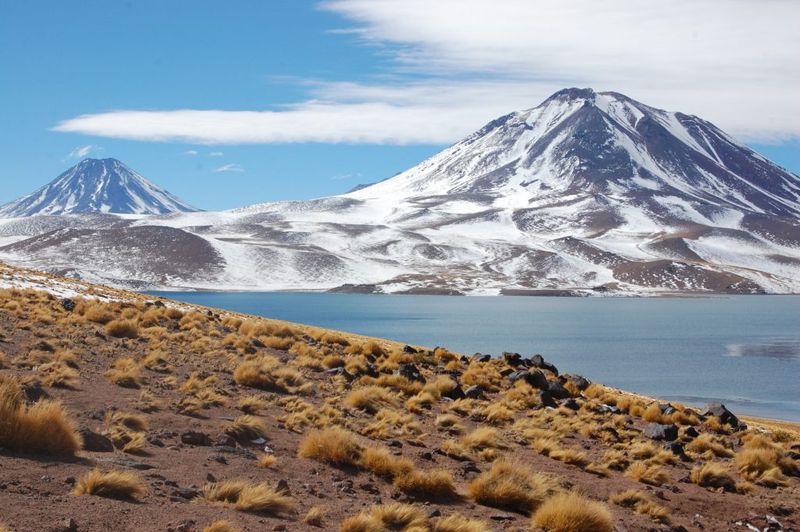
Salt lakes scattered across the Atacama Desert shine like mirrors against a backdrop of snow-capped volcanoes. Flamingos feed in the mineral-rich waters, creating pink splashes against the blue surface.
The high altitude (over 4,000 meters) and thin air make colors appear more intense and skies deeper blue. These lakes survive in one of Earth’s driest places, fed by underground springs. Temperature extremes cause the water to evaporate rapidly during the day and freeze at night, creating unique salt patterns around the shores.
23. Lake Bled, Slovenia
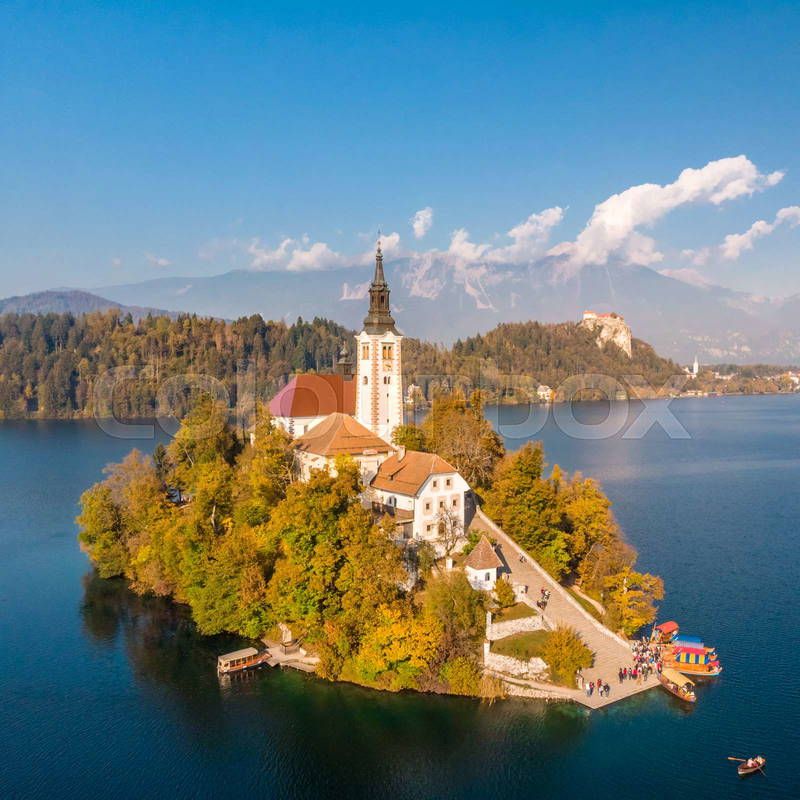
A tiny island with a 17th-century church rises from emerald waters, creating Slovenia’s most fairytale-like scene. The lake remains somewhat overlooked compared to Italy’s famous lakes just across the border.
Traditional wooden boats called pletnas, operated by standing rowers, ferry visitors to the island. Legend holds that the lake formed from tears of fairies mourning their stolen land. A medieval castle perched on a cliff above the lake completes the storybook setting that inspired many Slavic folk tales.
24. Loch Coruisk, Scotland
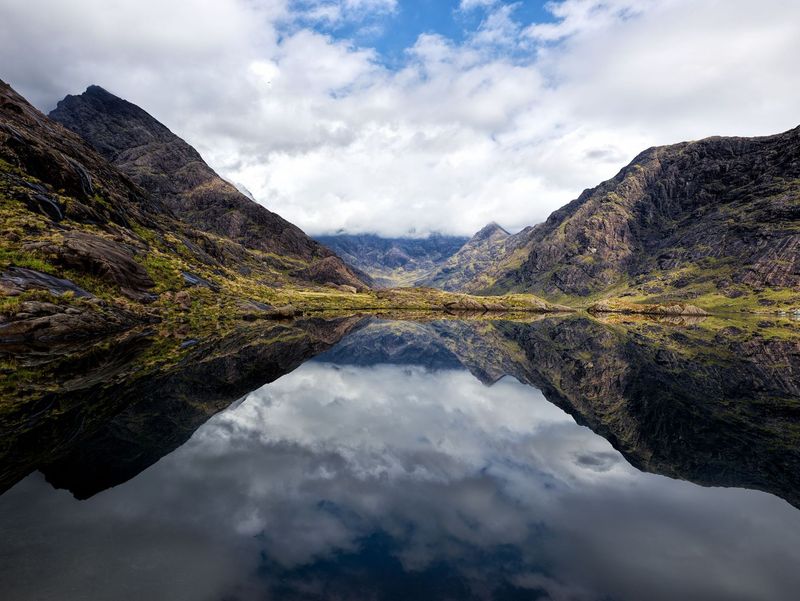
Nestled in the heart of the Black Cuillin mountains on the Isle of Skye, this remote freshwater loch is accessible only by boat or a challenging hike. Surrounded by some of Britain’s most dramatic peaks, its dark waters reflect the moody Scottish skies.
Sir Walter Scott described it as ‘the most savage scene in the Highlands.’ The loch’s isolation has preserved its wild character, with no development along its shores. Seals frequently swim up from the nearby sea inlet, creating ripples across the otherwise perfectly still surface.
25. Laguna 69, Peru
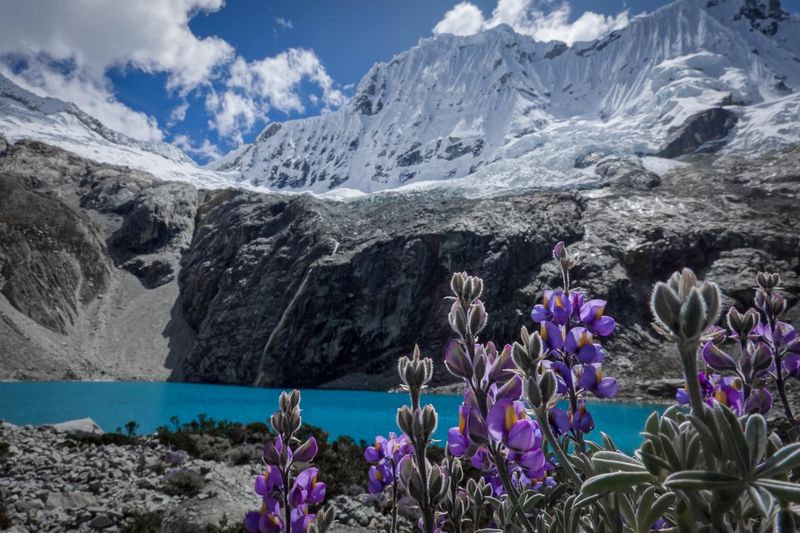
Hidden high in Peru’s Cordillera Blanca range, this turquoise alpine lake rewards those willing to hike 3 hours at 15,000 feet elevation. The striking blue comes from mineral runoff from surrounding glaciers.
Towering Nevada Chacraraju provides a snow-capped backdrop that reflects perfectly in the still waters. Despite the challenging access, the lake’s otherworldly color has made it increasingly popular with hikers. The name comes simply from a numbering system used to catalog the many lakes in the region.
26. Five Flower Lake, China
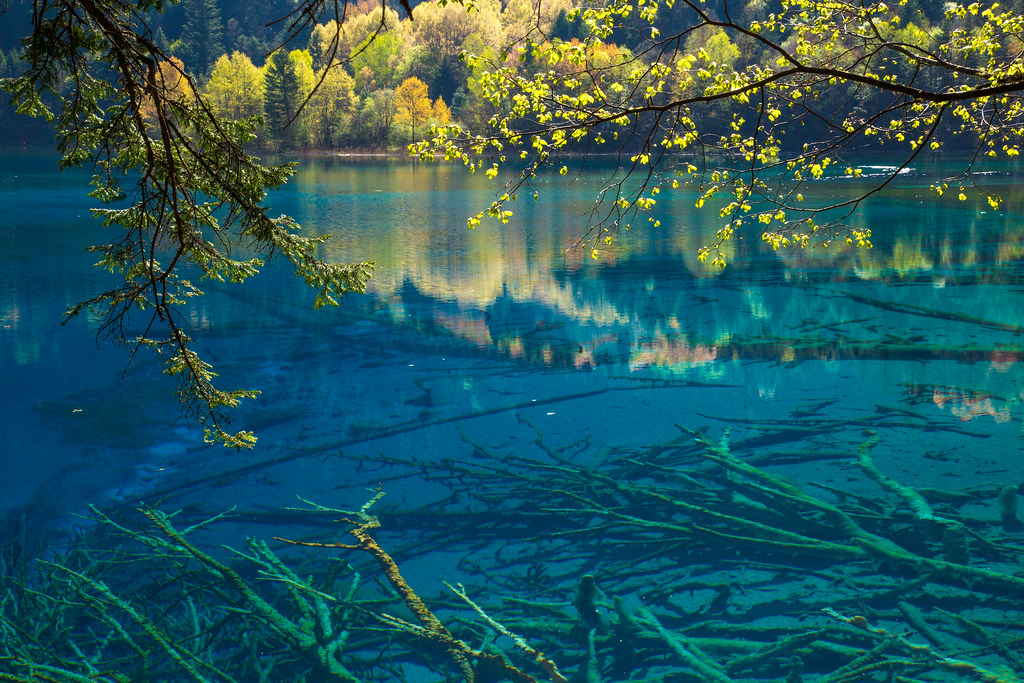
Ancient tree trunks create intricate patterns beneath crystal waters that shift between blue, green, and turquoise. Located in Jiuzhaigou National Park, this shallow lake’s bottom is covered with calcium carbonate, giving it a multicolored appearance.
The name comes from the five different colors visible in its waters throughout changing seasons and light conditions. Despite being just 5 meters deep, the exceptional clarity creates an illusion of greater depth. The fallen trees at the bottom have been preserved for centuries by the water’s mineral content.
27. Dove Lake, Tasmania
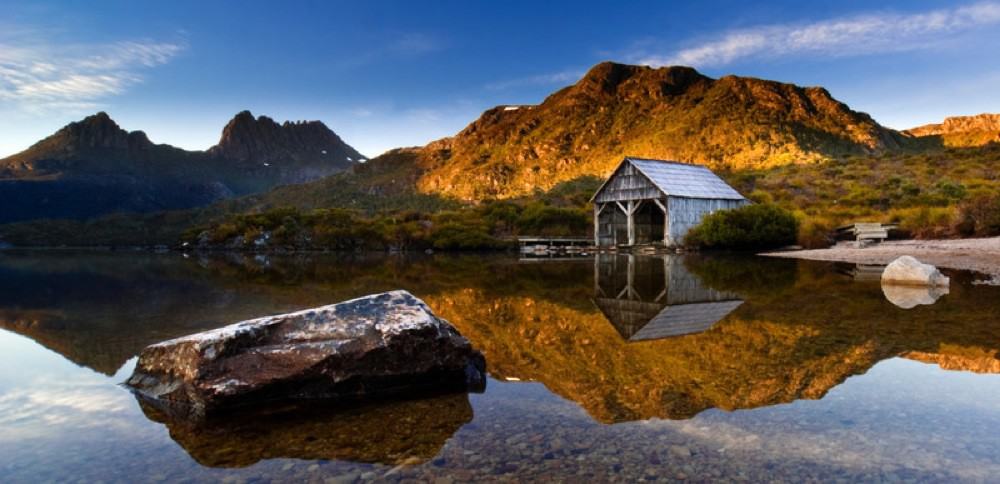
Carved by ancient glaciers, this lake sits at the foot of Cradle Mountain, creating one of Australia’s most iconic wilderness views. The still waters perfectly mirror the rugged peaks and surrounding temperate rainforest.
A 6-kilometer boardwalk circles the lake, providing access to this pristine landscape without damaging the fragile ecosystem. The lake houses the endemic Tasmanian freshwater crayfish, found nowhere else on Earth. During winter, snow dusts Cradle Mountain’s peaks, creating a scene more reminiscent of New Zealand or Patagonia than typical Australian landscapes.
28. Heaven Lake, North Korea/China Border
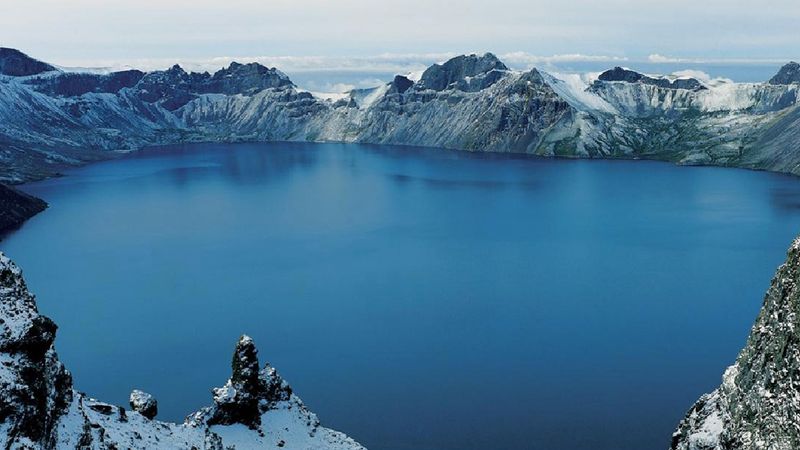
A massive volcanic crater lake straddles the border between two of the world’s most isolated countries. Sitting atop Mount Paektu (Changbai in Chinese), the lake formed after a colossal eruption around 946 AD.
Local mythology considers this the birthplace of Korean people. The lake freezes for half the year, with ice thick enough to walk across. At 2,189 meters above sea level, the deep blue waters contrast dramatically with the barren volcanic landscape. Both countries claim the lake, making it one of the most politically complex bodies of water on Earth.
29. Quilotoa Lagoon, Ecuador
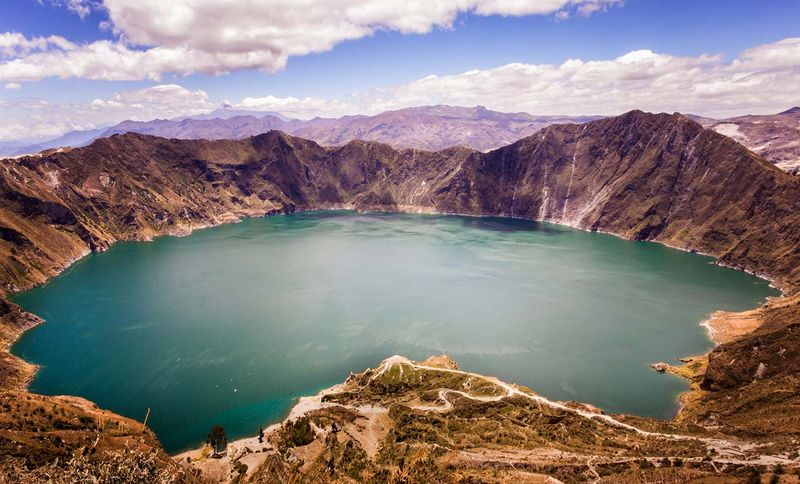
A water-filled caldera with shifting blue-green waters sits 3,914 meters above sea level in the Ecuadorian Andes. Local indigenous communities maintain traditional lifestyles around its shores, offering kayak rentals to visitors.
The lake formed after a catastrophic volcanic eruption about 800 years ago. Its mineral-rich waters change color throughout the day depending on cloud cover and algae movements. The steep 400-meter walls of the crater provide a natural amphitheater, creating unique acoustics where voices can sometimes be heard clearly across the water.
30. Silfra Fissure, Iceland
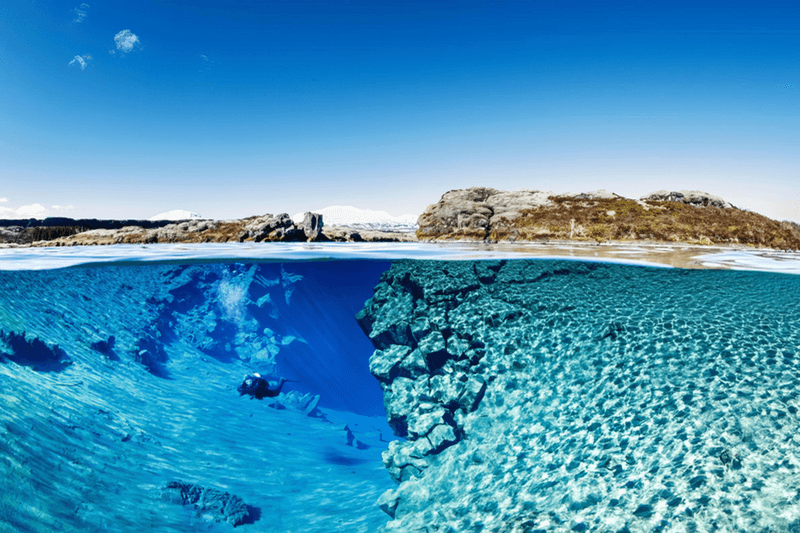
Not exactly a lake but a water-filled crack between continental plates, Silfra offers the unique experience of swimming between North America and Europe. The water’s clarity exceeds 100 meters—the clearest water on Earth.
Fed by glacial meltwater filtered through porous lava rock for 30-100 years before reaching the fissure. The water temperature hovers around 2°C year-round, requiring dry suits for swimmers. The extraordinary visibility creates a flying sensation as visitors float through the underwater canyon, with vivid blue depths below and continental walls rising on either side.
31. Iskanderkul, Tajikistan
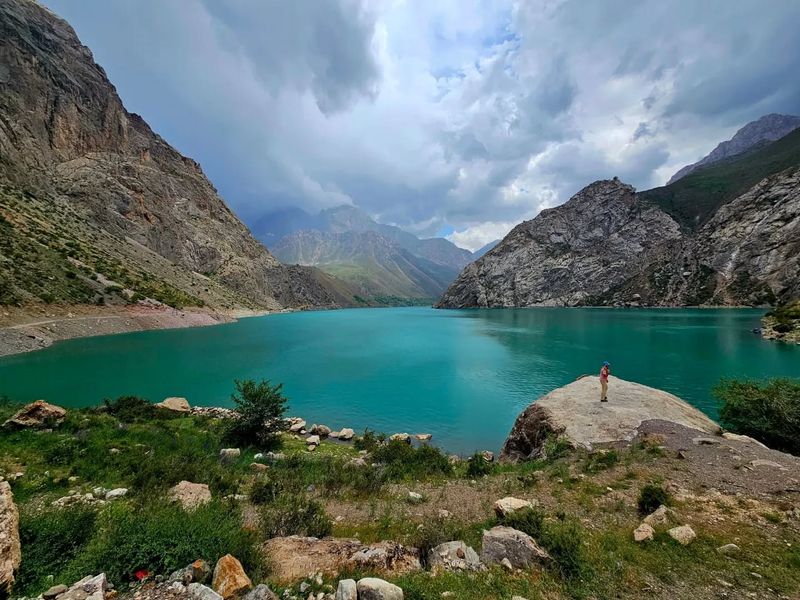
Named after Alexander the Great, this turquoise alpine lake nestled in the Fann Mountains remains virtually unknown to Western travelers. Local legend claims Alexander’s horse Bucephalus drowned here, giving the lake its name.
The triangle-shaped lake sits at 2,195 meters elevation, surrounded by snow-capped peaks. A small waterfall nicknamed ‘the Fan Niagara’ drops 38 meters nearby. The lake’s isolation and the country’s limited tourism infrastructure have preserved its pristine nature, making it feel like a true discovery for the few travelers who make the journey.
32. Gosaikunda Lake, Nepal
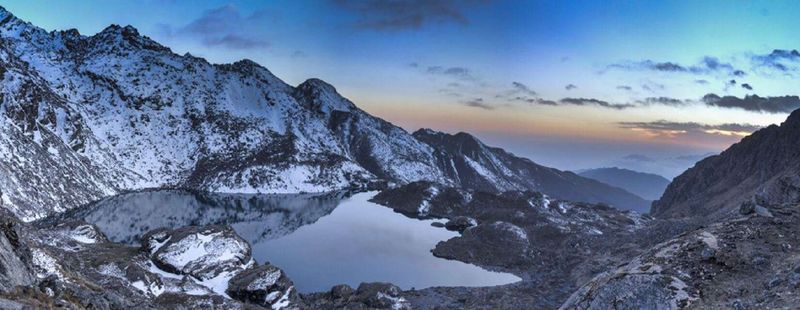
Considered sacred by both Hindus and Buddhists, this high-altitude lake sits at 4,380 meters in the Langtang National Park. Thousands of pilgrims visit during the August full moon, believing a dip in its icy waters washes away sins.
According to Hindu mythology, the lake was created when Lord Shiva thrust his trident into the mountain to extract water. The lake remains frozen for six months each year. The challenging trek to reach it takes visitors through rhododendron forests and alpine meadows before revealing the sacred waters nestled among some of the world’s highest peaks.
33. Lake Nakuru, Kenya
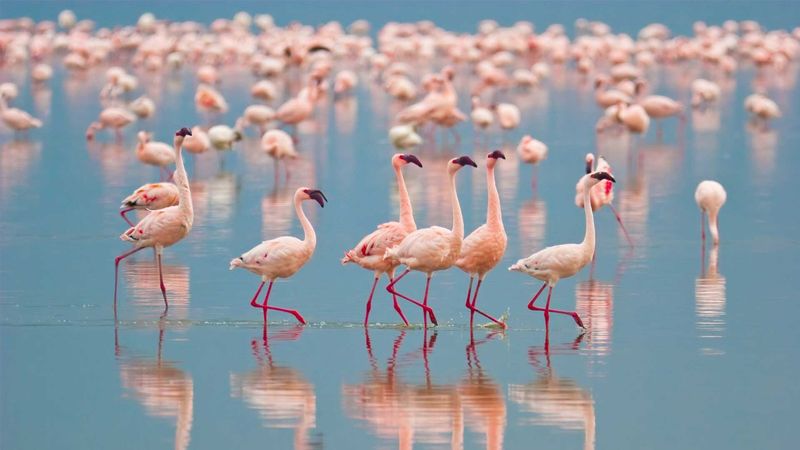
Famous for the millions of flamingos that sometimes line its shores, this alkaline lake in Kenya’s Rift Valley offers one of Africa’s most spectacular bird-watching experiences. The lake’s edges turn pink with birds feeding on the algae-rich waters.
Beyond flamingos, the surrounding national park protects endangered rhinos, giraffes, and lions. Water levels fluctuate dramatically with rainfall, sometimes causing the flamingos to relocate to other lakes. The algae that attract the birds also give the lake a distinctive smell that safari guides jokingly call ‘the perfume of Africa.’

